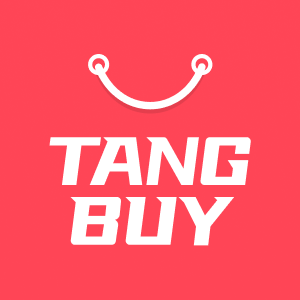A Beginner’s Guide to Starting a Dropshipping Side Hustle in 2025

Thinking about a Dropshipping Side Hustle in 2025? You can start with less than £100, which makes it ideal if you want flexibility or already have a busy schedule. Dropshipping profit margins usually range from 15% to 20%, and the market keeps growing. Take a look at how costs compare:
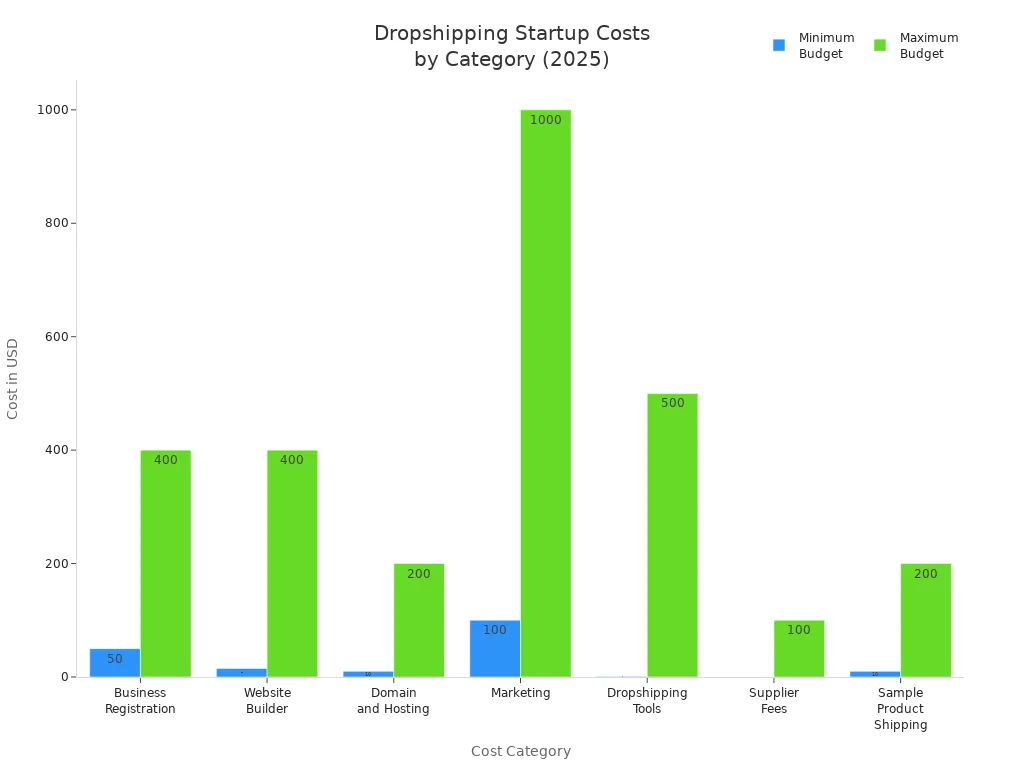
You’ll need to put in real effort and keep learning, but you don’t have to risk much money to get started.
Key Takeaways
You can begin a dropshipping side hustle in 2025 with under £100. This makes it low-risk and not expensive. Dropshipping lets you work from home with a flexible schedule. You do not need to buy or keep stock before selling. Picking the right niche and good suppliers is very important. This helps you earn steady money and keep customers happy. Making a strong brand and clear product listings helps you stand out. It also helps you gain trust from customers. Marketing on social media, paid ads, and with influencers helps more people see your shop. This can help you get more sales. Automation tools save you time by handling orders, stock, prices, and customer service. Good customer service and being honest with customers keeps them happy. This makes them want to buy from you again. Dropshipping needs hard work, patience, and learning new things. It is not a fast or easy way to make money.

Dropshipping Side Hustle in 2025
Is It Worth It?
You might wonder if a Dropshipping Side Hustle is really worth your time in 2025. The answer depends on your goals and how much effort you want to put in. Many people choose dropshipping because you do not need a lot of money to start. You can run your shop from home, and you do not have to buy stock upfront. This makes it easy to fit around a full-time job or studies.
Here are some reasons why dropshipping is a popular choice:
You can start with low costs and little risk.
You have the freedom to work when you want.
The global dropshipping market keeps growing, so there are more chances to earn.
You can use tools to automate tasks, which saves time.
You can pick products that match your interests or spot trends using tools like Google Trends.
Profit margins usually range from 15% to 25%. If you choose the right products and suppliers, you can make a steady income. Some people even scale up and turn their Dropshipping Side Hustle into a full business. Still, you need to plan well, keep an eye on your cash flow, and always look for ways to stand out.
Tip: Focus on products with high demand or unique features. This helps you avoid too much competition and keeps your profits healthy.
What to Expect
Many beginners think dropshipping is easy money. You might see ads that promise quick riches, but the truth is different. Dropshipping takes real work and patience. Here are some things you should know before you start:
You still need to manage inventory, even if you do not hold stock. If you do not track what your suppliers have, you could sell items that are out of stock.
Picking only cheap products can lead to very small profits. Try to offer a mix of affordable and premium items.
You must follow legal and tax rules. Ignoring these can cause big problems later.
Building a brand and a good-looking shop helps you gain trust and get more sales.
You need to track your results. Watch things like conversion rates and average order value to see what works.
Dropshipping is not passive income. You need to keep learning, testing, and improving.
Some people think AliExpress is the only place to find suppliers, but there are many options. You can use platforms like Spocket or Syncee to find suppliers closer to your customers, which can mean faster shipping. Also, do not rely on just one way to market your shop. Try different social media channels and see what brings in the most customers.
Note: Most people do not see big profits right away. Success comes from sticking with it, learning from mistakes, and making smart changes.
How Dropshipping Works

The Model
You do not need to buy stock or rent a warehouse to start dropshipping. You act as the shop owner, but you never touch the products. Instead, you list items from trusted suppliers on your online store. When a customer places an order, you buy the product from your supplier. The supplier then ships the item straight to your customer. This means you do not have to worry about storing, packing, or posting anything yourself.
Here’s how the dropshipping model works step by step:
You connect your online shop with suppliers who offer products you want to sell.
You add these products to your store and set your own prices.
A customer visits your shop and places an order.
You send the order details to your supplier, often using automated tools.
The supplier packs and ships the product directly to your customer, sometimes using your branding.
Tip: Automation tools can save you time by sending orders to suppliers without you having to do it manually.
Key Roles
Several people and companies help make dropshipping work smoothly. Each one has a special job:
Retailer (You): You run the online shop, choose products, set prices, and talk to customers.
Supplier: This company stores the products, packs them, and ships them to your customers.
Customer: This person buys from your shop and receives the product at their door.
Marketing and Social Media Experts: They help you get more visitors and sales by running ads and posting online.
Customer Service Assistants: They answer questions, handle returns, and keep customers happy.
Virtual Assistants: They help with tasks like research, order management, and admin work.
Accountants: They look after your money, taxes, and payments.
Third-Party Logistics (3PL) Providers: They manage storage, shipping, and tracking, especially if you want to grow your business.
All these roles work together using online systems. This helps orders move quickly from your shop to the customer.
Order Process
The dropshipping order process is simple but clever. You do not need to keep any products at home. Here’s what happens when someone buys from your shop:
A customer places an order on your online store and pays you.
You send the order details to your supplier, often with just a few clicks.
The supplier picks the product from their warehouse and packs it safely.
The supplier ships the product straight to your customer, sometimes with your shop’s branding.
The customer gets tracking details and waits for their parcel to arrive.
If there is a problem or the customer wants to return the item, you help them and work with the supplier to sort it out.
Note: Fast shipping and good communication keep your customers happy and help your shop stand out.
Getting Started
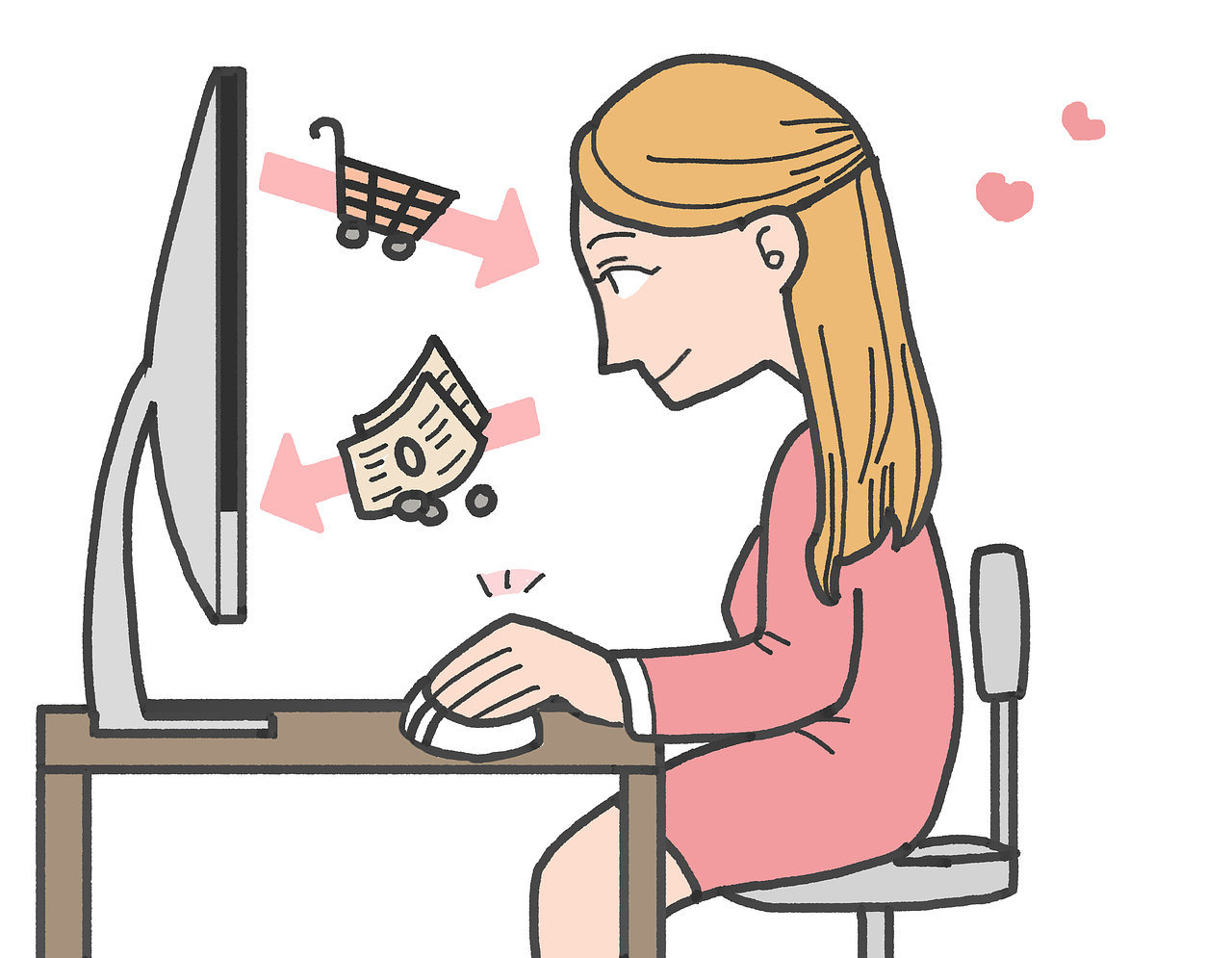
Niche Selection
Research
Choosing the right niche is the first big step for your Dropshipping Side Hustle. You want to find products that people want to buy, but you also need to make sure you can compete. Start by looking at what’s trending. Google Trends, Reddit, and Facebook groups are great places to spot new interests and lifestyle changes. You can also use tools like AMZScout or SEMrush to check if people are searching for certain products.
Here’s a simple way to research your niche:
Search for ideas on Google Trends and social media.
Check if suppliers offer the products you want.
Think about product size and weight. Lighter items cost less to ship.
Look for products people use often or feel strongly about.
Use tools to see how many people are already selling these products.
Read customer reviews on Amazon and Trustpilot to spot quality issues.
Make sure you can grow your shop by adding more products later.
Tip: Pick a niche that matches your interests. You’ll find it easier to understand your customers and spot new trends.
You might want to look at digital products too. Ebooks, templates, and online courses are very popular in 2025. These products don’t need shipping, so you save time and money. Platforms like Etsy and Shopify make it easy to sell digital downloads.
Here’s a table of popular dropshipping categories for 2025:
Category | Example Products | Why It’s Popular |
|---|---|---|
Electronics & Gadgets | Smartwatches, home security devices | People love new tech and smart home gadgets |
Eco-friendly | Reusable bags, solar chargers | More shoppers want green and sustainable products |
Personalised Items | Custom t-shirts, 3D-printed jewellery | Custom gifts and unique items are in high demand |
Furniture | Home office desks, ergonomic chairs | More people work from home and want comfy furniture |
Pet Supplies | Toys, grooming tools, pet food | Pet owners spend more on their furry friends |
Digital Products | Ebooks, templates, online courses | No shipping needed, instant delivery, high margins |
Avoiding Saturation
You don’t want to enter a market that’s already packed with sellers. Too much competition makes it hard to stand out and earn good profits. Here’s how you can avoid saturated niches:
Use market research tools to check how many shops sell the same products.
Search for your product on Google and see how many ads and shops appear.
Look at social media to see if the niche is full of paid promotions.
Read reviews to spot problems with popular products. If everyone complains about the same thing, you might find a way to do better.
Try to find a unique angle. Maybe you can offer faster shipping, better customer service, or bundle products in a new way.
Note: If you see lots of big brands and heavy advertising, you might need a bigger budget or a fresh idea to compete.
Supplier Choice
Finding Suppliers
You need reliable suppliers to keep your customers happy. Start by searching trusted directories like Alibaba and AliExpress. These sites have a huge range of products and offer buyer protection. You can also try TradeIndia, Dropstore, or GlowRoad if you want to focus on certain regions.
Here’s how you can find good suppliers:
Use Google searches with words like “distributor”, “reseller”, or “wholesale”.
Don’t judge a supplier by their website. Some great suppliers have simple sites.
Order from other shops to see where their products come from.
Attend trade shows if you want to meet suppliers face-to-face.
Ask manufacturers for recommendations.
Check supplier reviews and ratings.
Avoid suppliers who charge high ongoing fees.
Tip: Work with more than one supplier. This way, you can offer more products and avoid problems if one supplier runs out of stock.
Vetting
Before you trust a supplier, you need to check their quality and service. Here’s what you should do:
Order samples to see the product quality for yourself.
Ask suppliers about their shipping times and order process.
Compare prices to make sure you can still make a profit.
Read reviews from other shop owners.
Make sure the supplier can handle returns and customer service.
Check if they offer private labelling or custom packaging. This helps you build your brand.
Note: Reliable suppliers help you avoid delays, unhappy customers, and lost sales.
Store Setup
Platforms
You need an online shop to start selling. There are several platforms you can use, each with its own strengths:
Platform | Why Choose It? | Watch Out For |
|---|---|---|
Shopify | Easy to use, lots of apps, great for beginners and scaling up | Some fees, less customisation |
WooCommerce | Free, open-source, full control over your shop | Needs more setup and maintenance |
Wix | Drag-and-drop builder, simple for beginners | Fewer features as your shop grows |
BigCommerce | Good for larger shops, strong scaling options | Less beginner-friendly |
Squarespace | Stylish templates, easy to use | Fewer dropshipping integrations |
Most beginners start with Shopify or Wix because they are simple and have lots of support. WooCommerce is great if you want more control and don’t mind a bit of tech work.
Branding
Branding helps your shop stand out and builds trust with customers. You want people to remember your shop and come back for more. Here are the key parts of branding:
Create a unique logo that shows off your shop’s style.
Use the same colours, fonts, and images across your website and social media.
Choose a brand name that’s easy to remember and fits your products.
Find suppliers who offer private labelling or custom packaging. This makes your shop look more professional.
Write a clear brand story. Tell customers why you started your shop and what makes you different.
Offer great customer service. Happy customers are more likely to recommend you.
Branding Element | What It Means |
|---|---|
Brand Identity | Your logo, colours, and how your shop looks |
Brand Personality | The way you talk to customers and show your shop’s values |
Brand Experience | How customers feel when they shop with you |
Brand Vision | Your goals and what you want your shop to achieve |
Brand Positioning | Who your shop is for and how you stand out |
Brand Differentiation | What makes your shop unique |
Brand Extension | Adding new products to grow your shop |
Tip: Use free tools like Hatchful to design your logo. Always keep your branding consistent across your website, packaging, and social media.
Product Listings
Descriptions
Your product listing is your shop window. If you want people to buy, you need to make your listings clear, helpful, and inviting. Start with a strong title. Use keywords that people search for, like "Wireless Bluetooth Earbuds – Noise Cancelling and Waterproof". This helps your product show up in search results and tells shoppers exactly what you offer.
Next, write a description that answers your customer’s questions. Focus on the benefits, not just the features. Tell them how your product makes life easier or solves a problem. Use bullet points to break up the text and make it easy to scan. For example:
Long battery life – listen all day without charging
Comfortable fit for all ear sizes
Water-resistant for workouts and rainy days
Add technical details too. List the size, colour options, materials, and any other important facts. This helps customers feel confident about what they’re buying and reduces returns.
Images matter just as much as words. Use high-quality photos from different angles. Show the product in use, not just on a white background. If you can, add a short video. People trust what they can see.
Don’t forget trust signals. Show customer reviews, star ratings, and security badges. These build confidence and help shoppers feel safe buying from you.
Tip: Always include a clear call to action, like “Order now for free shipping!” or “Limited stock – buy today!”
Pricing
Setting the right price can make or break your shop. You need to cover your costs and still offer good value. Think about the price of the product, shipping, marketing, and any fees from your selling platform. If you set your price too low, you might get lots of sales but make little profit. If you go too high, you could lose customers.
A smart way to price your products is to match your strategy to the type of item you sell. Here’s a handy table to help you choose:
Product Type | Best Pricing Strategies |
|---|---|
Low-ticket products | Fixed markup, free plus shipping |
Medium-ticket products | Cost-based pricing, bundle deals |
High-ticket products | Premium or perceived value pricing |
All types | Tiered markup, competition-based, psychological |
For example, if you sell a phone case (a low-ticket item), you might add a fixed amount to your cost or offer it free with paid shipping. For a standing desk (a high-ticket item), you can use premium pricing and highlight its unique features.
You should also keep an eye on your competitors. Check what other shops charge and see if you can offer something extra, like faster shipping or a free gift. Use automation tools to update your prices quickly if the market changes.
Note: The best price is one that covers your costs, attracts buyers, and supports your brand’s value. Don’t race to the bottom—focus on what makes your shop special.
Marketing
Social Media
Social media is your best friend when it comes to getting the word out. Platforms like Instagram, TikTok, and YouTube help you reach new customers and show off your products in action. Short videos work well on TikTok and Instagram Reels. You can use YouTube for longer product demos or how-to guides.
Share user-generated content, like photos or reviews from happy customers. This builds trust and shows real people love your products. Try running polls or asking questions in your posts to boost engagement.
Tip: Post regularly and use hashtags that match your niche. This helps more people find your shop.
Paid Ads
Paid ads can give your shop a quick boost. Google Ads help you reach people who are already searching for products like yours. Social media ads on Facebook, Instagram, and TikTok let you target specific groups based on age, interests, or location.
Retargeting ads are powerful. They remind people who visited your shop but didn’t buy to come back and finish their order. You can also use email or SMS marketing to send special offers to people who have shown interest.
Keep your ads simple and eye-catching. Use clear images, short text, and a strong call to action like “Shop now” or “Get 10% off today”.
Influencers
Influencers can help you reach a bigger audience fast. Look for people who already talk about products like yours. They don’t need millions of followers—sometimes smaller influencers have more loyal fans.
Work with influencers to create honest reviews or unboxing videos. This gives your shop social proof and helps new customers trust you. Long-term partnerships work best because they feel more genuine.
You can also set up affiliate programmes. Offer influencers a small reward for every sale they bring in. This motivates them to keep sharing your products.
Note: Always check that influencers match your brand values and have real followers, not just big numbers.
Time & Costs
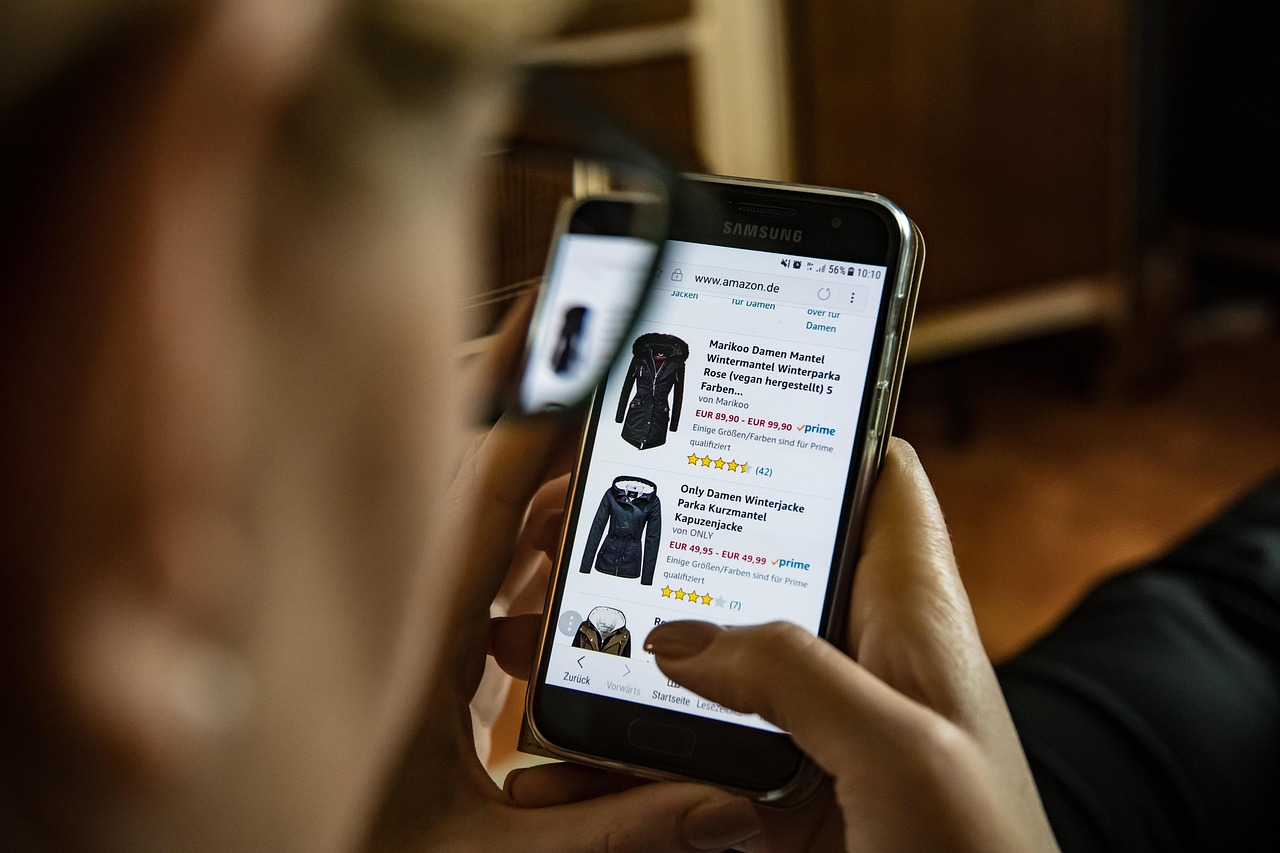
Time Commitment
Starting a Dropshipping Side Hustle does not take as much time as you might think. You can set up your shop in about 40 hours. If you break this down, you only need to spend 1.5 to 2 hours each day, or about 10 hours a week. This includes picking your niche, building your website, finding suppliers, uploading products, and setting up your marketing. Many people spread these tasks over a month, so you can work in the evenings or at weekends.
Once your shop is live, you will need to keep working on it. The first few months are the hardest. You might spend 7 to 10 hours a week checking orders, answering customer questions, and running ads. As your business grows, you can use automation tools or hire virtual assistants to help with tasks like customer service, product uploads, and marketing. This lets you focus on growing your shop instead of doing the same jobs every day.
Tip: Dropshipping is flexible. You can work when it suits you, which makes it perfect if you have a busy life.
Startup Costs
You do not need a lot of money to start. Most people launch their Dropshipping Side Hustle with just £40 to £80. This covers your website, a domain name, and maybe a few apps or tools. You do not have to buy stock upfront, so you avoid big risks. If you want to spend a bit more, you can invest in better branding or paid ads, but it is not required at the start.
Here is a simple table showing typical startup costs:
Item | Estimated Cost (£) |
|---|---|
Website Platform | 20–30 |
Domain Name | 10–15 |
Apps/Plugins | 10–20 |
Marketing (optional) | 10–30 |
Total | 40–80 |
You can keep costs low by using free trials and basic plans. As your shop grows, you can upgrade your tools.
Managing with a Job
Balancing a Dropshipping Side Hustle with a full-time job is possible if you plan well. Many people work on their shop before or after work, or at weekends. Try these tips to make it easier:
Find your best time of day to work on your shop.
Focus on the most important tasks first.
Use time blocks to plan when you will do each job.
Automate tasks like order processing and social media posts.
Hire freelancers for jobs you do not enjoy or that take too long.
Take breaks and look after yourself to avoid burnout.
You can also join online groups to get support and advice from others. Remember, you do not have to do everything yourself. Automation and outsourcing help you save time and keep your business running smoothly.
Passive Income Myths
You might have seen videos or ads that promise easy money with dropshipping. They often talk about “passive income” as if you can set up a shop, walk away, and watch the cash roll in. This sounds great, but it’s not how things work in real life. Let’s clear up some of the biggest myths you’ll hear about passive income in dropshipping.
Here’s a table that shows what people often believe and what actually happens:
Myth | Reality |
|---|---|
Dropshipping is a get-rich-quick scheme | You need time, effort, and patience. Most people only see real results after months of learning and hard work. |
You don’t need any money to start | You still need to pay for your website, marketing, and tools. Starting with zero money is not realistic. |
You can sell anything and make money | Not all products sell well. You must research, test, and pick items with real demand and good suppliers. |
You can run your shop on autopilot | Automation helps, but you still need to check orders, help customers, and update your shop. |
Passive income means no work | You must put in effort at the start and keep working to keep your shop running smoothly. |
It’s easy and anyone can do it | You need to learn about marketing, customer service, and how to solve problems. |
You can rely only on suppliers for quality | You are responsible for your customers’ experience. Always check your suppliers and products. |
Once set up, it runs itself forever | You need to keep an eye on trends, update your products, and fix any issues that come up. |
You can replace your 9–5 income in months | Building a steady income takes time. Most people need years, not weeks, to reach this goal. |
Tip: If something sounds too good to be true, it probably is. Real success comes from steady effort, not shortcuts.
You might think you can just “set it and forget it.” In reality, dropshipping needs your attention. You have to answer customer questions, handle returns, and keep your shop looking fresh. If you ignore your shop, you risk bad reviews and lost sales.
Some people believe you can sell any product and make money. This is not true. You need to find products that people want, check the quality, and make sure your supplier can deliver on time. If you skip this step, you could end up with unhappy customers and lots of refunds.
You may also hear that dropshipping is dead or that it’s too late to start. This is not true either. The market keeps growing, and new trends appear all the time. If you stay curious and keep learning, you can still build a successful shop.
Note: Dropshipping can give you more freedom and a flexible schedule, but it is not a magic money machine. Treat it like a real business, and you’ll have a much better chance of success.
Challenges
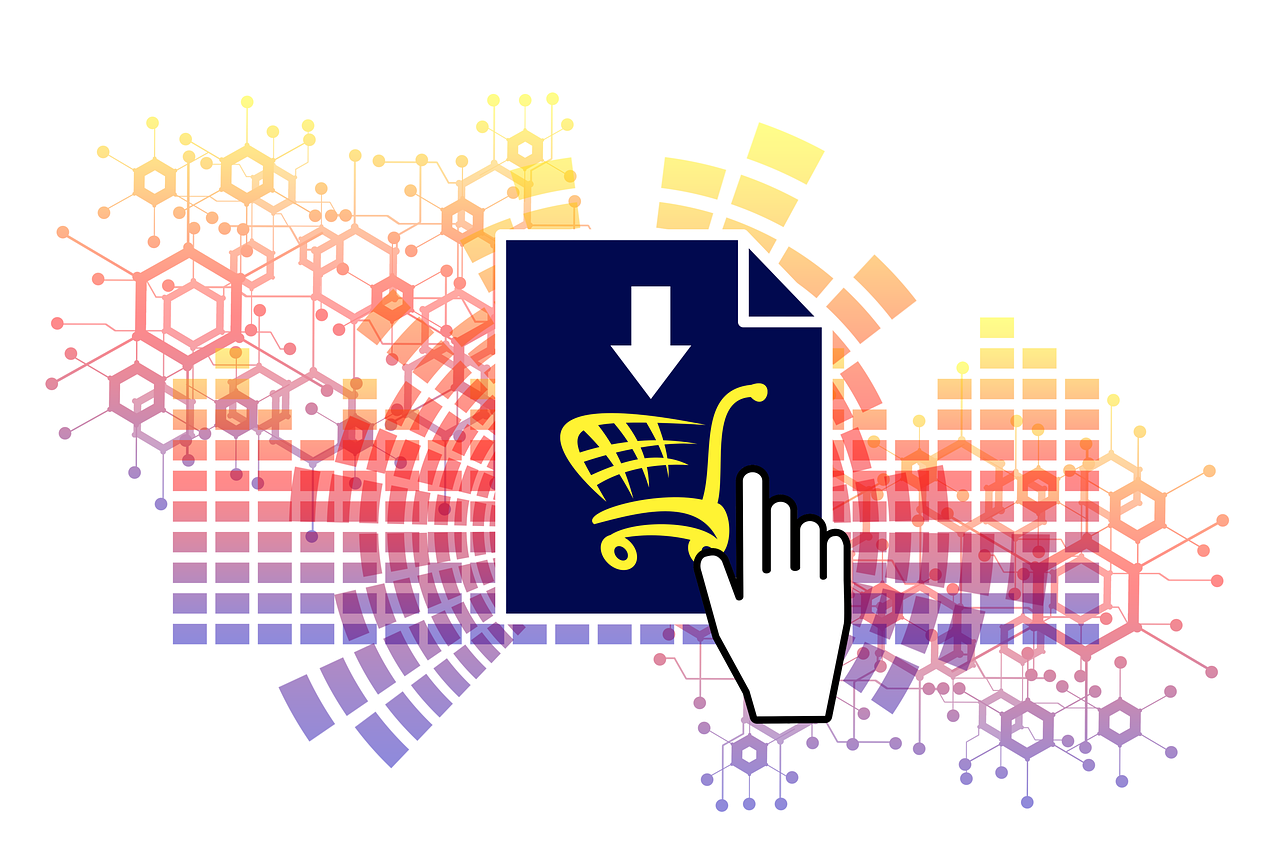
Supplier Issues
You depend on your suppliers for most things in your shop. If they make mistakes, your business feels it right away. Here are some common problems you might have with suppliers:
Suppliers sometimes run out of stock without telling you. This can mean cancelled orders and upset customers.
If you do not check product details, you might sell something different from what arrives. This can lead to returns and bad reviews.
You cannot control how items are packed or sent. If things arrive broken, your shop gets the blame.
Slow suppliers mean your customers wait longer for their orders. People get annoyed and might not buy again.
If tracking numbers are wrong or missing, customers start to worry and lose trust.
Most suppliers use plain boxes. This makes it hard to build a strong brand.
Tip: Always buy samples before selling a product. This lets you check quality and spot problems early.
Shipping Delays
How fast you ship orders can affect your shop’s reputation. Customers want their items quickly, but dropshipping often takes longer. Here is a table showing how long shipping takes with popular suppliers:
Supplier | Shipping Time Range | Processing Time | Shipping Options & Notes |
|---|---|---|---|
Zopi | 1 to 3 days | Fast shipping, quick delivery, helps keep customers happy. | |
AliExpress | 12 to 20 days | 1 to 5 days | Standard shipping: 15-20 days (cheaper); Premium shipping: 12-15 days (faster, costs more). |
Temu | 4 to 20 days | N/A | Standard shipping: 6-20 days (free); Express shipping: 4-9 days (costs extra unless order is over $129). |
Long waits often mean refund requests, bad reviews, and lost sales. You can help by telling customers the truth about delivery times at checkout. Offer faster shipping if you can. Use tools to send orders quickly and keep customers updated with tracking. Sometimes, bad weather or courier problems cause delays. Stay calm and let your customers know what is happening.
Note: Telling customers about shipping times builds trust and keeps them happy, even if delivery is slow.
Customer Service
Good customer service helps your shop stand out. If you want happy customers, you must be quick, clear, and helpful. Here are some simple tips:
Tell customers about shipping times, delays, and returns before they buy.
Choose good suppliers and shipping methods to avoid problems.
Answer questions fast. Use chatbots or helpdesk tools to reply quickly.
Help customers by email, live chat, phone, or social media. Use what works best for them.
Make returns and refunds easy. A simple policy keeps people calm and avoids problems.
Be kind when things go wrong. Offer to resend or refund without making it hard.
Ask for feedback and update your FAQs. This helps you spot problems and improve your service.
Have a clear contact page with all your details. Make sure your product pages answer common questions. Be kind with returns and do not add extra fees. When you set clear rules, you get fewer complaints and more repeat buyers.
Tip: Small things, like using a customer’s name or sending a thank-you note, make people feel special and want to come back.
Legal & Tax
When you start your own shop, you need to think about legal and tax rules. These rules help protect you, your customers, and your business. If you ignore them, you could face fines or even lose your shop. Let’s break down what you need to know.
First, you must register your business. You can choose to be a sole trader, a partnership, or set up a limited company. Each option has different rules and paperwork. Check what works best for you and your country.
You also need clear contracts with your suppliers. These contracts should cover prices, shipping, returns, and who is responsible if something goes wrong. If you are not sure, ask a lawyer to check your agreements.
Watch out for copyright and trademark issues. Never sell fake or copied products. Always check that your supplier has the right to sell the items. Selling counterfeit goods can get you into serious trouble.
You must follow consumer protection laws. This means your product descriptions must be honest. Prices must be clear. You need to honour warranties and make sure your products are safe. If you sell things like food, cosmetics, or electronics, check if there are extra safety rules.
Data protection is also important. You collect customer names, addresses, and payment details. Keep this information safe. Use a secure website (look for SSL certificates). Follow privacy laws like GDPR if you sell to people in the UK or Europe. Always have a privacy policy on your website.
Advertising rules matter too. Never use misleading ads. Be honest about what your products can do. If you break these rules, you could face legal action or lose your reputation.
Tax can be tricky. You may need to collect sales tax or VAT, depending on where your customers live. Some places have special rules called “nexus” laws. These rules decide if you must pay tax in a certain area. Keep good records of your sales and expenses. You will need these for your income tax. As your shop grows, think about hiring an accountant.
Here’s a table to help you remember the main legal and tax points:
Area | What You Need to Do |
|---|---|
Business Registration | Register your business and choose the right structure |
Supplier Contracts | Have clear agreements covering prices, shipping, and returns |
Intellectual Property | Avoid fake or copied products; check supplier rights |
Consumer Protection | Be honest in descriptions, pricing, and warranties; follow safety rules |
Data Protection | Keep customer data safe; follow privacy laws; use SSL certificates |
Advertising | Use truthful ads; avoid misleading claims |
Sales Tax & VAT | Collect and pay taxes where needed; understand local rules |
Income Tax | Keep records; pay tax on your profits |
Platform Rules | Follow the rules of sites like Shopify, Amazon, or eBay |
Tip: Laws can change. Check for updates often and ask for help if you are unsure. Staying legal keeps your business safe and helps you grow.
Tips for Success

Product Selection
Choosing the right products can make or break your shop. You want items that people want, but you also need to make sure you can compete and earn a profit. Here’s a step-by-step way to pick winning products:
Make a list of product ideas based on your niche and what suppliers offer.
Remove products that are too common or have too many sellers.
Check if you can make a good profit by looking at the price and your costs.
Look for products with steady sales, not just quick trends.
Review all your data before making a final choice.
You should focus on products that cost between $20 and $50. This price range is affordable for most people and gives you a good profit margin. Try to pick items with at least 50 reviews. This shows people like them and they are reliable. Avoid markets with more than 20 sellers, but make sure there are at least two. This helps you avoid too much competition and ensures you can get stock.
Use tools like Google Trends to check if people want your product all year. TikTok is great for spotting trends—search hashtags like #tiktokmademebuyit. You can also use ZIK Analytics or YouTube to see what’s popular and how well products sell. Always base your choices on real data, not just a guess.
Tip: Never pick products at random. Use research tools and look for proof that people want what you plan to sell.
Marketing Tactics
You need to get your shop in front of the right people. Social media is a great place to start. Share photos and videos of your products on Instagram, Facebook, and Pinterest. Use hashtags and join groups where your customers hang out.
Paid ads can help you reach more people fast. Facebook Ads let you target people by age, interests, and location. Try video ads—they often get more clicks. Retargeting ads remind people who visited your shop to come back and buy.
Don’t forget about SEO. Use keywords in your product titles and descriptions so people can find you on Google. Keep your website fresh and check for mistakes. Email marketing works well too. Build a list of customers and send them special offers or updates.
Ask happy customers for reviews and show these on your site. This builds trust and helps others decide to buy. You can also join online forums or groups to share tips and answer questions. This makes people see you as an expert.
Note: Mix different marketing tactics. What works for one shop might not work for another, so keep testing and learning.
Automation Tools
Running a shop takes time, but you can save hours by using automation tools. These tools help with stock, orders, pricing, and customer service.
Oberlo and Inventory Source sync your stock and send orders to suppliers. This stops you from selling out-of-stock items.
Pricing tools update your prices if your supplier changes theirs. This keeps your profits safe.
Zendesk and Gorgias help you answer customer questions quickly. They use chatbots and keep all messages in one place.
Zapier and Shopify Flow connect your apps and automate tasks like sending emails or updating stock.
Klaviyo and Mailchimp send emails to your customers automatically. You can set up welcome emails, offers, and updates.
SellerActive and Sellbrite help you manage your shop if you sell on more than one website.
TrackingMore gives your customers real-time updates on their orders.
These tools help you avoid mistakes, save time, and grow your business. Many offer free trials, so you can test them before you pay.
Tip: Start with one or two tools. As your shop grows, add more to save even more time.
Building Trust
You want your customers to feel safe and happy when they shop with you. Trust is the key to turning visitors into buyers and making sure they come back. Let’s look at some simple ways you can build trust in your online shop.
1. Be clear and honest from the start
People like to know what to expect. Show your shipping, return, and refund policies in a place that’s easy to find. Use simple words and avoid hidden fees. If you set clear rules, customers feel more confident buying from you.
2. Make it easy to get help
Set up different ways for customers to contact you. Offer support by email, live chat, or even social media. Quick replies show you care. You can use AI chatbots to answer common questions any time of day. If someone has a problem, help them fast. This can turn an unhappy shopper into a loyal fan.
3. Show you are real and safe
Add trust badges to your website. These can be SSL certificates, payment logos, or security seals. They tell people their details are safe. Make sure your website uses HTTPS. A secure site builds confidence and keeps data safe.
4. Use social proof
People trust other shoppers. Show reviews, ratings, and testimonials on your product pages. Ask happy customers to share photos or videos of your products. You can even work with influencers who already have your target audience’s trust. When new visitors see real feedback, they feel better about buying.
5. Give lots of information
Write detailed product descriptions. Add clear photos and videos from different angles. If you answer common questions in your FAQ page, you save time and help customers feel sure about their choice. The more you share, the less doubt people have.
6. Make your website easy and fast
A slow or confusing website can scare people away. Make sure your shop works well on phones and tablets. Keep the design simple and let people find what they need quickly.
Tip: Always be honest if there is a delay or problem. Most people understand if you keep them updated.
Here’s a quick checklist to help you build trust:
Trust Factor | What to Do |
|---|---|
Clear Policies | Show shipping, returns, and privacy info |
Fast Support | Offer live chat, email, and quick replies |
Social Proof | Display reviews, ratings, and testimonials |
Secure Website | Use HTTPS and trust badges |
Detailed Info | Add FAQs, product specs, and clear images |
Easy Experience |
When you focus on trust, you make shopping easy and safe for everyone. Happy customers will tell their friends and help your shop grow.
Is It Right for You?
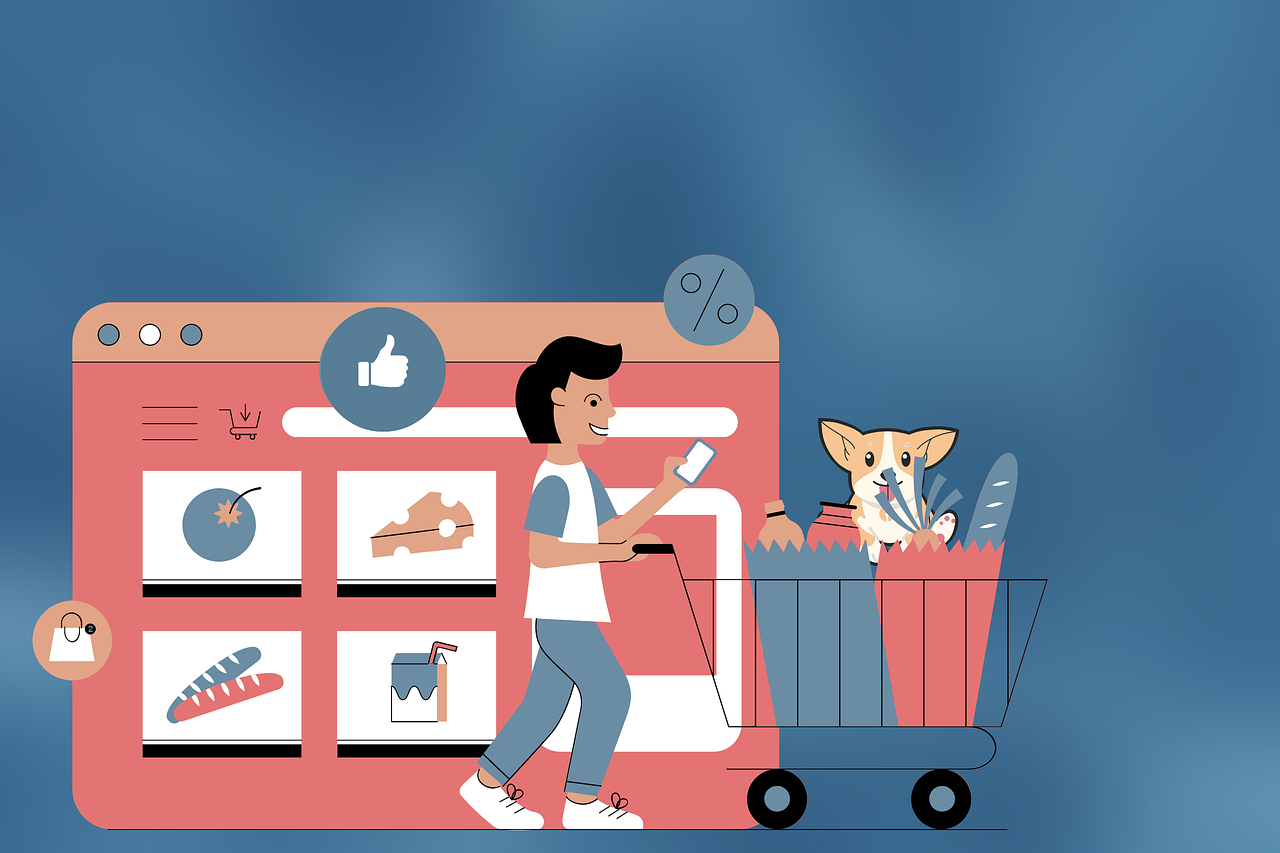
Pros & Cons
Before you jump in, it helps to weigh up the good and the bad. Dropshipping Side Hustle offers some big advantages, but you will face a few challenges too.
Pros:
You can start with very little money. Most of your costs go to your website and marketing.
You work from anywhere and set your own hours.
You launch your shop quickly. No need to wait for stock.
You do not handle inventory or shipping. Suppliers do that for you.
You can sell a wide range of products and change them easily.
You only pay for products after you make a sale, so you avoid big risks.
You can scale up fast if you find winning products.
Cons:
The market is crowded. You need strong marketing to stand out.
Profit margins are lower because of competition and supplier prices.
You depend on suppliers for stock and shipping. If they mess up, your customers notice.
You have less control over product quality and delivery times.
Managing returns and customer service can get tricky.
You must keep learning and adapting to stay ahead.
Note: Dropshipping remains popular in 2025 because you can start small and work flexibly. Still, you must be ready for tough competition and some headaches with suppliers.
Who Should Try
You might wonder if this business suits you. Dropshipping Side Hustle works best for people who want to start a business with low risk. If you like testing new ideas and learning as you go, you will enjoy it. You do not need lots of money or a warehouse. You just need time, patience, and a willingness to learn.
This side hustle fits you if:
You want to earn extra money without quitting your job.
You like working online and enjoy social media.
You want to work from home or anywhere else.
You do not mind solving problems and talking to customers.
You are happy to keep learning about marketing and trends.
If you want quick, easy money or hate dealing with customers, this may not be for you. Dropshipping takes effort and patience. You must keep up with changes and fix problems fast.
Next Steps
Ready to give it a go? Start by picking a niche that interests you. Research products and suppliers. Set up your online shop using a platform like Shopify or WooCommerce. Focus on building a brand that stands out. Test different products and marketing tactics. Track your results and make changes when needed.
Join online groups or forums to learn from others. Use free resources and tutorials to build your skills. Remember, every successful shop started with a single step. Take yours today and see where your Dropshipping Side Hustle can lead.
You now know what it takes to start your own shop online. Research helps you spot the best products and suppliers. Stay patient and keep learning as you go. You do not need much money to begin, so why not take that first step today? If you want more tips, check out guides on Shopify or join dropshipping forums. Your journey starts with one click!
FAQ
What is dropshipping in simple terms?
You sell products online without keeping any stock. When someone buys from your shop, you order from a supplier. The supplier sends the product straight to your customer. You never handle the items yourself.
How much money do I need to start?
You can start with as little as £40 to £80. This covers your website, domain name, and some basic tools. You do not need to buy any stock upfront.
Can I do dropshipping while working full-time?
Yes, you can! Many people run their dropshipping shops in the evenings or at weekends. Automation tools help you save time and keep things running smoothly.
How do I find good products to sell?
Look for trending items using Google Trends or TikTok. Check reviews on Amazon. Use supplier directories to see what is popular. Pick products that solve problems or make life easier.
What if my supplier makes a mistake?
Mistakes can happen. Always check your supplier’s reviews and order samples first. If there is a problem, talk to your customer quickly and offer a solution. Good communication builds trust.
Is dropshipping legal in the UK?
Yes, dropshipping is legal in the UK. You must register your business, pay taxes, and follow consumer protection laws. Always use honest product descriptions and keep customer data safe.
How long does shipping usually take?
Shipping times depend on your supplier. Most orders arrive in 7 to 20 days. Some suppliers offer faster options. Always tell your customers how long delivery will take.
Do I need to be good at tech to start?
No, you do not! Platforms like Shopify and Wix make it easy. You can use drag-and-drop tools. Many guides and videos show you each step. If you get stuck, help is always available.

TangBuy: A Smarter Way to Dropship in 2025
If you're looking to stay competitive with dropshipping in 2025, speed and trend-awareness are key. TangBuy helps you stay ahead with real-time product trends, fast fulfilment, and factory-direct sourcing. With over 1 million ready-to-ship items, 24-hour order processing, and seamless Shopify integration, TangBuy makes it easier to test, scale, and succeed in today's fast-moving eCommerce landscape.
See Also
How To Successfully Start Your Dropshipping Venture In 2025
Starting Shopify Without Dropshipping: A Newcomer’s Handbook 2025
Profitable Dropshipping Concepts To Explore For 2025 Earnings
Essential Advice For Achieving eBay Dropshipping Success In 2025
